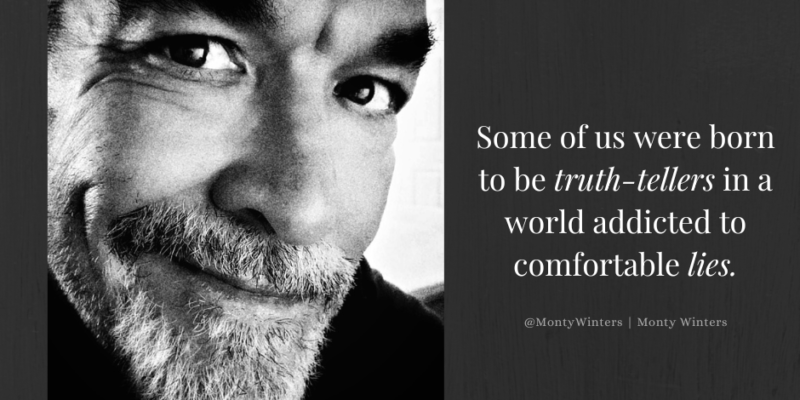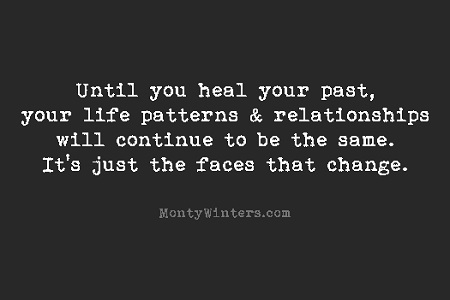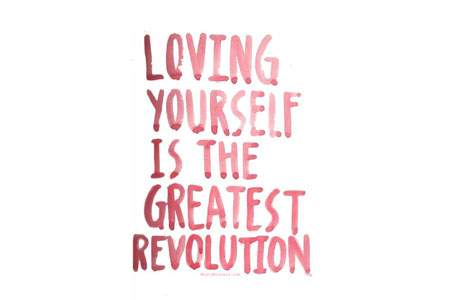Once you see, you can’t just unsee.
Once you know you know the truth, you can’t just unknow it.
The biggest mistake you make with us truth tellers is, you think we want to be right.
Trust me, we wish we were wrong.
-Monty Winters




No matter how committed to healing you are, your relationship patterns always measure how much you have healed.
Considering every childhood fear developed in relationships, with parents, siblings, and ex-lovers, the true measure of healing is seen in your relationship patterns.
If you desire to measure your healing, I’ve listed signs of healed and unhealed relationship trauma here:
1. Signs You’ve Healed Relationship Trauma
• You’re not afraid to lose your partner.
• You take responsibility for your own emotions.
• You don’t idealize your partner and put him or her on a pedestal.
• You give yourself the love, peace and happiness you desire.
• You aren’t taking responsibility for your partner’s unhealed pain. You encourage him or her to heal oneself.
• You don’t use arguing to face conflict. You open your heart to learn from conflict.
• Sex isn’t an escape to avoid lack of emotional connection, but something that happens after an emotional connection is established.
• You don’t use relationships for security. You use relationships for growth, learning, and healing.
2. Signs You Have Not Healed Relationship Trauma
• You need your partner.
• You push your own emotions onto your partner.
• You idealize your partner. You put him or her on a pedestal.
• You depend on your partner to feel loved, peace and happy.
• You believe it’s your job to help your partner through the pain.
• You use arguing to solve problems.
• Sex is used to escape a lack of emotional connection. Sex keeps you coming back.
• You use the relationship to escape feeling insecure, unsafe and alone.
If you can sit with your pain, listen to your pain and respect your pain — in time you will move through your pain.

One of the simplest ways to live in the present moment is to be childlike.
Children are such wonderful teachers. After a week with a four year old and a sixteen month old (my grandkids), I was quickly reminded of this. If we want to remember ourselves, and what life is all about, we just need to observe a child for a few minutes. It won’t be long before we appreciate the joy, simplicity and presence that the child exudes, and perhaps we may even wonder, “How can I be more like him/her?”
The quality of being able to enjoy life’s simple moments is not far away. In fact, it is our natural state to do so (or should I say, be so!). Children in their innocence and purity are powerful mirrors that show us what is innately within, and what we long to reconnect to—a presence that has never left us. They help us release a familiar spark from within that says, this is who I am, and always have been, deep inside.
Strange as it may seem, it is harder to not be in the present moment than it is to be in the present moment. That is because, as already mentioned, presence is our natural state. Denying our presence is like pushing a beach ball underwater when it is meant to float amongst the waves and in the sunlight. But this is what we do. We have spent a lifetime learning to sublimate our spirit, living in our heads, and disconnected from the NOW. Obsessing about the past and future has become our natural way of living. It has become habit, and the unnatural has become naturalized. What is hard has sadly become the norm, so much so that we have forgotten that the present moment even exists.
I am not here to preach that I am a master of living in the moment. It is an ongoing practice that I am committed to, and that I learn so much through. What I offer is an opportunity to see what is possible for us if we look into the mirror of children. In their vulnerable state, children are the purest reflections of the essence of life, in all its beauty. They reflect truth in the same way that the untainted aspects of our natural world give us hints as to the reality of life. If we allow children to be their authentic self, they will show us the way. They will guide us back home to the truth of who we are. We just need to be open and receptive, willing to say “Yes” to their world, versus trying to make it our own. When we do, when we practice being present with their world, we learn to be present as a whole. By letting them be, and observing them, listening to them, and staying curious, we enter their world full-heartedly.
It is only the heart that lives in the present moment; not the mind. That is the gift children bring to us – their heart. By offering their heart to us, they invite our heart to come out and play; they invite our joyful, creative selves to dance in the present moment with them, and all of life.
Here are 6 ways children live in the present moment, the NOW. And six ways you can as well.
1. Embodiment
Children have not lost their connection with their body – where their heart lives and expresses itself through the magic of creative, embodied movement. While children move freely and fluidly, skipping on sidewalks, running to swings, bending over backwards, and doing endless cartwheels, we adults have become rigid. We of course were once just like them, embodied and trusting of our faculties. We weren’t afraid to dance, fall over, or roll in mud, but now we are. Our fears, and our need to be intelligent and rational, to plan our life, and be academic, have moved us progressively away from our hearts/bodies and into our minds/heads. We no longer twirl on sidewalks, but rather move like an arrow, straight ahead to our next destination (while planning the one after that!).
The mind does not live in the present moment. Only the body and heart does. The more we engage the body and set it free, the more we will feed our heart, and our heart will feed our body. And we will live in the boundless wonders of the present moment.
2. Beginner’s Mindset
Children live in the NOW because everything is fresh and new. They have no preconceived notions of how things ought to look or be. “Should” and “shouldn’t” is not vocabulary that they are prone to use. And they don’t have the labels we do, or at least, they are not attached to them. Therefore a tree can be a fort, and a bush can transform into a hideout.
Moreover, children have fewer stories associated with the labels and the objects they are looking at. That is because they have little to no memories attached to a particular object, whereas adults do. Memories are stories retained our mind; stories that are happy, fearful, sad and more. When we view an object, or see a circumstance play out, it can trigger thoughts, which can then trigger emotions, which can then trigger stories or memories. Then these memories and emotions can lead us to new thoughts and emotions, and the next thing we know, we are lost in the past for twenty minutes, with barely any appreciation for the beauty of the sunset that lies before us. We were too busy brooding over how we wish our ex-partner had enjoyed the wild colours of the sunset like we always did. Meanwhile, the child next to us is in awe, looking with reverence without any story or label to distract him. He is perceiving with a freshness such that each moment is a new beginning.
3. Process-Oriented
Children live in the process of creation, whereas adults are usually more focused on the outcome of their creation. This deprives adults not only of the enjoyment of the process, but also disconnects them from the infinite creativity that lives in their heart. Their ingrained pattern of living from A-to-B-to-C prevents them from utilizing the power of NOW (sinking into the A), and keeps them ruled by their bottomless list of to-do’s.
Children are not interested in to-do’s; they are only interested in to-be’s – not a list that is created by the mind, as to-do’s are, but rather an ongoing and spontaneous expression of the heart. The fluid state of being in the NOW allows them to move with the arising’s of the creative heart “moment to moment”. Moments blend into each other, leaving the child moving from one stroke of the paint brush to another in constant ease and enjoyment. Nothing will deter him, until something else catches his eye, and then that is the next task at hand. The present moment leads him there.
4. Dreams and Imagination
Children have tremendous faith in the power of their dreams and imagination. They do not question them in the same way we do as adults. They trust them and allow their dreams and imagination to inform them about what is true or real, what life is all about, and what their place in the world is.
Being a fairy princess is perfectly reasonable in the heart of a child, and we don’t want to take that away from her. That is because dreams and imagination are inspirations of the heart. It is the soul’s way of offering a larger picture of reality, one that transcends the limits of the mind and conventional living. Take away a dream, and in its place we may impose a reality that in no way reflects the child’s spirit. The more this is done, the more the child will live disconnected from her heart and the NOW. She will grow up with a cacophony of shoulds and shouldn’ts that keeps her in her head, and away from the guiding whispers of her soul where dreams and imagination are inspired.
5. Uninhibited and Free
Children are not afraid to let their feelings be shown. When emotion arises, they let it out. They scream loudly. They laugh unabashedly. They cry with deep tearful rivers flowing down their cheeks. What emerges from within in any moment is seen and heard with no instant to spare. There is no mistaking how the child feels. Moreover, when the child expresses one emotion, after a few moments she is onto the next. She is happy, sad and angry within a span of forty seconds. And then suddenly all is forgotten, and she is transfixed by her toy doll.
What a powerful and insightful thing to witness! What a teaching for the rest of us on how to live courageously with our emotions; on how to live in a fluid state such that emotion is freely and immediately expressed, released as energy in motion – E-Motion. Eventually, when a child is taught that it is unsafe to feel and express certain emotions, then she will decide consciously or subconsciously to block the flow of energy related to these emotions. They will become stuck. That is the birth of illness, and the death of her freedom to honor the fullness of here and NOW.
6. Enchantment
Young children have not yet lost their enchantment with life. A small child stands at the edge of a vast ocean and looks in wonder and awe. Many moments will pass, and still, there she is, gazing, barely moving. The child does not know the name of the ocean, nor what is in it, but she revels in the colors, the birds flying above, and the sparkles of sunlight dancing on the waves.
This enchantment of what the present moment contains is available to all of us. We can experience it in any endeavor such as making a meal and cleaning the toilet, if only we allow ourselves to engage life from the NOW; if we just take a deep breath, and release the agendas of our discursive mind; if we engage our senses, take in the feeling of the wind on our skin, the radiant colors, the variegated textures and sounds, and the feelings that emerge in our body. We can be present if only we allow ourselves to pause and appreciate the beauty and abundance of life once again, the same way we did when we were children. Only then will we commune with the essence of life and ourselves, an essence that can only be experienced in the present moment.
Credits: Thank you Brooklyn & Camden for being my teacher. Papaw loves you immensely. xoxo

It’s all about falling in love with yourself and sharing that love with someone who appreciates you, rather than looking for love to compensate for a self love deficit.
― Eartha Kitt
If you keep avoiding self love, the Universe will keep sending you people who also avoid loving you, hoping you get a f*cking clue.
Our external world (the people around us and the situations we live in) will always be a mirror to our internal world, what is going on inside.
What does that even mean?
If we love ourselves, we will not be able to tolerate living in circumstances which don’t support that belief.
And the opposite is true.
If we don’t believe we are lovable and worthy, we will choose people and situations which support that.
That’s why the people we choose are such an invitation to our growth and what we need to focus on.
This is also why poisonous relationships can’t exist in our lives if we don’t believe on some level we deserve them.
They mirror what we believe about ourselves.
Loving yourself is the greatest revolution.
m
www.montywinters.com